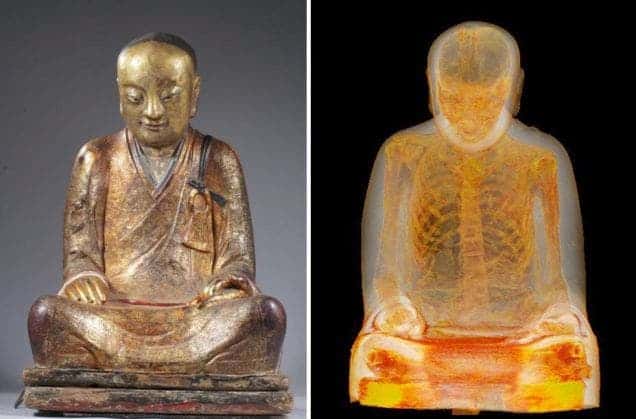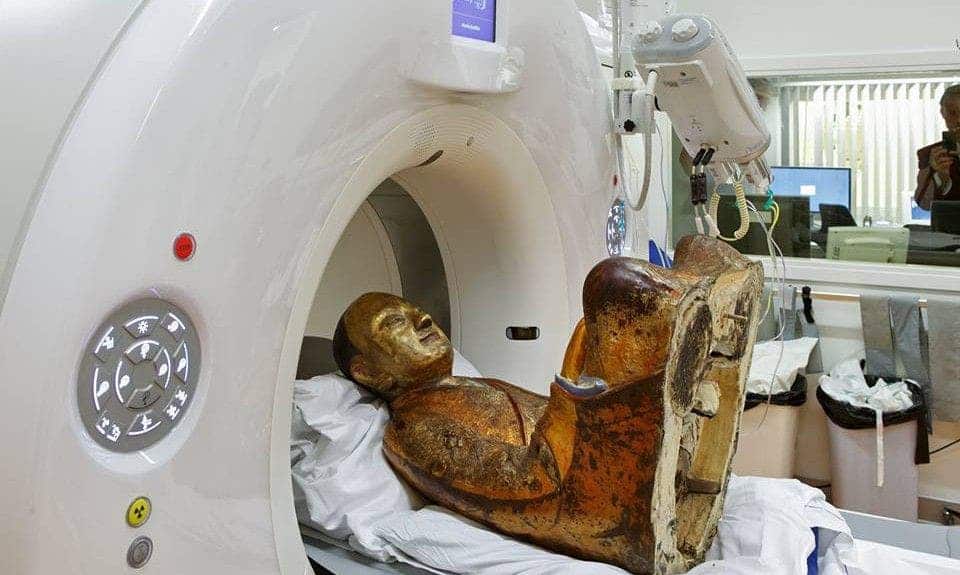Using CT-scans, researchers at the Netherlands-based Drents Museum imaged a mummified monk who lived 1,000 years ago inside a Buddha statue. Encased inside the golden cast, lie the the remains of Buddhist master Liuquan of the Chinese Meditation School. His organs were removed prior to becoming encased, which isn’t a surprise being a standard mummification practice. What was surprising however were the rolls of paper scraps covered in Chinese writing which were placed where the organs used to sit.

Is this just a case of someone taking Buddha’s saying “peace comes from within” way too literally? Apparently, this human relic isn’t alone. Great Buddhist masters are often mummified to help them reach the Buddha-state. Basically, the meditative practice continues following the master’s death. This is called Tukdam. Sogyal Rinpoche describes it in The Tibetan Book of Living and Dying the process:
A realized practitioner continues to abide by the recognition of the nature of mind at the moment of death, and awakens into the Ground Luminosity when it manifests. He or she may even remain in that state for a number of days. Some practitioners and masters die sitting upright in that state for a number of days. Some practitioners and masters die sitting upright in meditation posture, and others in the “posture of the sleeping lion.” Besides their perfect poise, there will be other signs that show they are resting in the state of the Ground Luminosity: There is still a certain color and glow in their face, the nose does not sink inward, the skin remains soft and flexible, the body does not become stiff, the eyes are said to keep a soft and compassionate glow, and there is still a warmth at the heart. Great care is taken that the master’s body is not touched, and silence is maintained until he or she has arisen from this state of meditation.

Earlier this year, another mummified monk in lotus position was found in Mongolia. According to forensic analysis, the remains which were preserved in animal skin are thought to be 200 years old. Again, the monk is claimed to be ‘not dead’ and is instead one stage away from becoming a real-life Buddha. Dr Barry Kerzin, a famous Buddhist monk and a physician to the Dalai Lama, said: ‘I had the privilege to take care of some meditators who were in a tukdam state.
‘If the person is able to remain in this state for more than three weeks – which rarely happens – his body gradually shrinks, and in the end all that remains from the person is his hair, nails, and clothes. Usually in this case, people who live next to the monk see a rainbow that glows in the sky for several days. This means that he has found a ‘rainbow body’. This is the highest state close to the state of Buddha’.
He added: ‘If the meditator can continue to stay in this meditative state, he can become a Buddha. Reaching such a high spiritual level the meditator will also help others, and all the people around will feel a deep sense of joy’.


